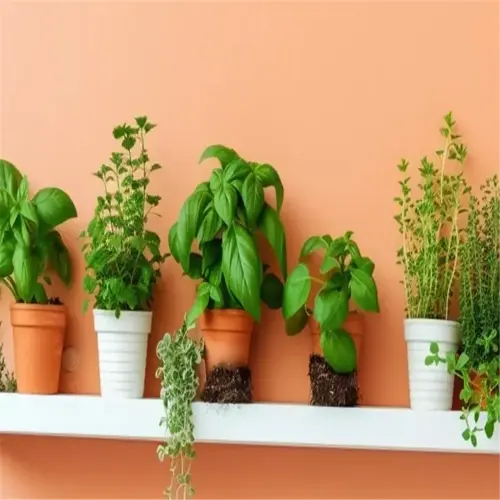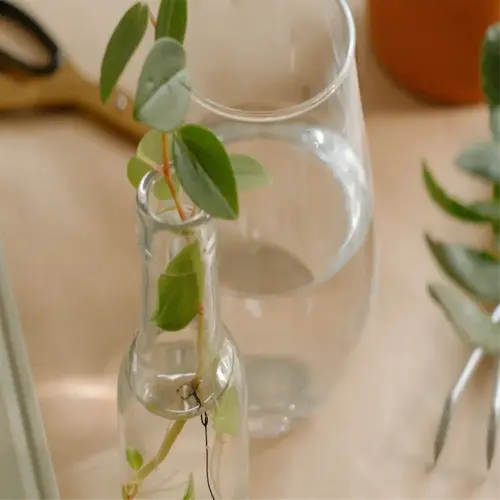10 Best Ground Cover Shade Plants

Written by
Benjamin Miller
Reviewed by
Prof. Martin Thorne, Ph.D.Ground cover shade plants effectively inhibit weed growth and erosion
Native plants like Hexastylis flourish in dry, acidic shade conditions
Layer textures of plants (Heuchera + Ophiopogon) will add depth in shaded areas, not just in foliage
Soil pH 5.5 - 6.8 maximizes growth for most ground cover shade plants
Drought tolerant Sedum and Delosperma require little to no watering once established
Ajuga and Tiarella invalidate statements that shade gardens lack color
Article Navigation
Ground cover shade plants are those incredible spreaders that stay under 18 inches tall and turn those dark corners into lush carpets. These plants are nature's living mulch for the soil; they cover the soil, suppress weeds, and hold slopes or areas where sunlight does not penetrate deep. During my 10-year experience designing gardens, I have seen a ground cover shade plant, Ajuga, thread through tree roots like a piece of flowing emerald thread.
Shade challenges are not limited to issues of darkness. Areas that grow under mature trees are 70% darker than areas in partial shade, which starves most plants. Regions designated USDA zones 5-9 provide shade warriors like Hexastylis arifolia, which grow where nothing else will. It is about bringing your abundant tenacity to the challenges unique to your region.
I once saw a barren slope beneath oaks come to life using Sedum ternatum. The succulent leaves would hoard moisture while the roots held on to eroded soil. Maybe you could combine it with Epimedium's heart-shaped foliage. That duo would outsmart dry shade. Ground covers don't simply persist. They are rebuilding ecosystems one square foot at a time.
10 Best Ground Cover Shade Plants
Plants that serve as ground cover in shaded areas, such as Ajuga reptans, quickly spread within a growing season to cover bare soil. Ajuga reptans is a plant that can succeed through the process of vegetative propagation. Contrast this with Rohdea japonica, a slow-growing shade-tolerant perennial plant that has patience. USDA hardiness zones 5-9 are appropriate for Epimedium's drought tolerance, and USDA hardiness zones 6-10 are appropriate for Ophiopogon with its dark purple blades. Planting speed becomes important when controlling soil erosion.
I've planted Ajuga between flagstonesin a spot that already receives foot traffic to crush the soft roots. The bronze leaves soften the edges and the roots hold a path stable. For an understory experience, I have Tiarella cordifolia acclimating under my several maples. The blooms resemble foam floats over the foliage, which has lobed and serrated edges. To me, design is not just aesthetically pleasing. I see design as a strategically thought-out problem-solving endeavor with living things.
The competitors are separated by water requirements. While Sedum ternatum saves moisture in its thick leaves and laughs at dry spells, Galium odoratum (Sweet Woodruff) makes you water it weekly for starry flowers. These plants will fit your garden personality - neglect tolerant warriors or pampered performers - and avoid new gardener regrets.
Don't neglect your texture play. Use Pachysandra's glossy mat in combination with Heuchera's ruffled leaves mat near gatherings and seating areas. In established gardens, I have used this combination succinctly, which in my clients' gardens has cut the mulch savings by 60% all while adding depth to the garden. Pachysandra and Heuchera are a double whammy of reliability for zones 3-8, proving that beauty and functionality can go hand and hand in the quiet nooks and crannies of shade.
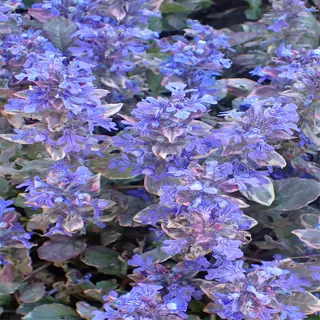
Ajuga reptans 'Burgundy Glow'
- Characteristics: Tri-colored leaves with purple, cream, and green hues
- Spread Rate: 12-18 inches (30-45 cm) annually through surface runners
- Hardiness: Thrives in USDA zones 4-9
- Light Needs: Tolerates full shade to partial sun
- Soil Preference: Well-drained soil with pH 6.0-7.5
- Unique Benefit: Withstands moderate foot traffic
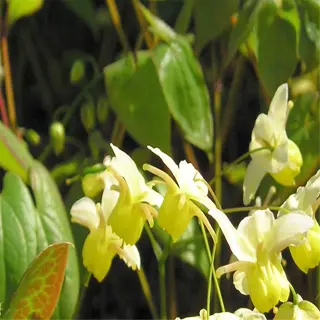
Epimedium x versicolor
- Characteristics: Semi-evergreen with bronze-tinged new growth
- Spread Rate: 6-8 inches (15-20 cm) annually via rhizomes
- Hardiness: Suitable for zones 5-8
- Light Needs: Deep shade to dappled sunlight
- Soil Preference: Moist, humus-rich acidic soil (pH 5.5-6.5)
- Unique Benefit: Drought-resistant once established
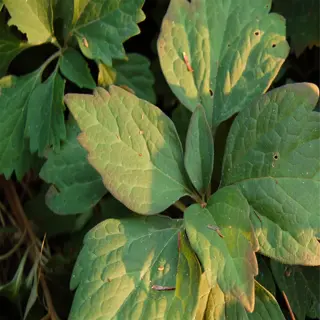
Pachysandra procumbens
- Characteristics: Mottled blue-green foliage with faint silver markings
- Spread Rate: 4-6 inches (10-15 cm) annual expansion
- Hardiness: Best in zones 6-9
- Light Needs: Full to partial shade
- Soil Preference: Neutral to slightly alkaline pH 6.5-7.2
- Unique Benefit: Native alternative to invasive species
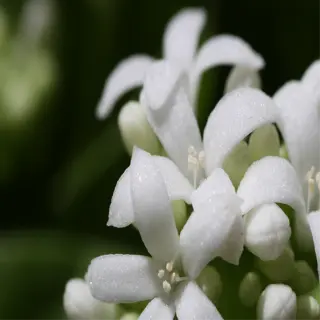
Galium odoratum
- Characteristics: Whorled leaves with star-shaped flowers
- Spread Rate: 9-12 inches (23-30 cm) per growing season
- Hardiness: Zones 4-8 compatible
- Light Needs: Medium to full shade
- Soil Preference: Rich, moist woodland soil pH 6.0-7.0
- Unique Benefit: Natural deer deterrent
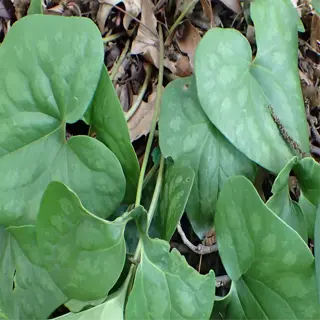
Hexastylis arifolia
- Characteristics: Arrowhead-shaped leaves with silver veining
- Spread Rate: 3-5 inches (7.5-12.5 cm) annually
- Hardiness: Zones 6-9 adaptable
- Light Needs: Full shade under tree canopies
- Soil Preference: Dry, acidic soil pH 5.0-6.0
- Unique Benefit: Evergreen in mild climates
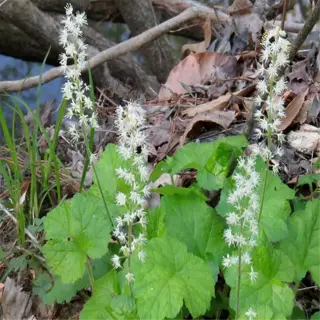
Tiarella cordifolia
- Characteristics: Airy white flower spikes in spring
- Spread Rate: 8-12 inches (20-30 cm) via stolons
- Hardiness: Zones 4-9 suitable
- Light Needs: Partial to full shade
- Soil Preference: Humus-rich soil pH 5.5-6.8
- Unique Benefit: Attracts early-season pollinators
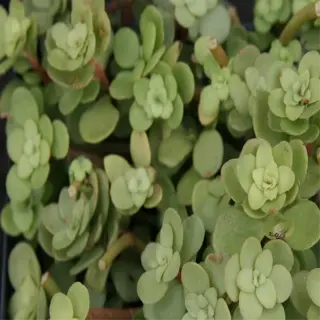
Sedum ternatum
- Characteristics: Succulent leaves with white spring blooms
- Spread Rate: 6-9 inches (15-23 cm) annually
- Hardiness: Tolerates zones 4-8
- Light Needs: Bright shade to partial sun
- Soil Preference: Dry, rocky soil pH 6.0-7.5
- Unique Benefit: Thrives in nutrient-poor conditions
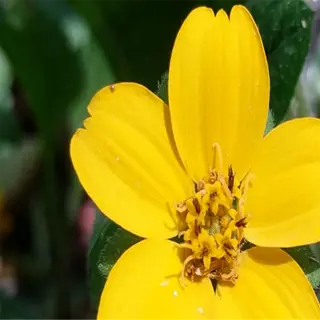
Chrysogonum virginianum
- Characteristics: Daisy-like yellow flowers with dark centers
- Spread Rate: 12-15 inches (30-38 cm) per year
- Hardiness: Zones 5-9 adaptable
- Light Needs: Partial shade to filtered sun
- Soil Preference: Moist, well-drained soil pH 6.0-7.0
- Unique Benefit: Blooms spring through fall
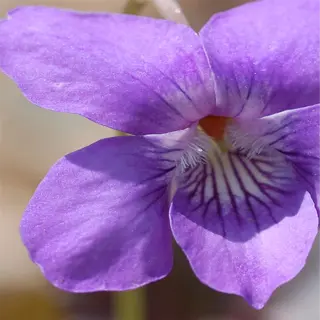
Viola labradorica
- Characteristics: Heart-shaped leaves with purple undertones
- Spread Rate: 6-10 inches (15-25 cm) annually
- Hardiness: Suitable for zones 3-8
- Light Needs: Partial to deep shade
- Soil Preference: Moist, acidic soil pH 5.5-6.5
- Unique Benefit: Self-seeding capability
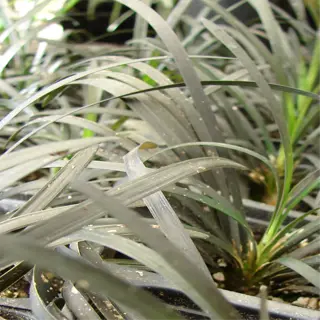
Ophiopogon planiscapus
- Characteristics: Striking black-purple foliage
- Spread Rate: 4-6 inches (10-15 cm) yearly
- Hardiness: Zones 6-10 compatible
- Light Needs: Full shade to partial sun
- Soil Preference: Well-drained soil pH 6.0-7.5
- Unique Benefit: Dramatic contrast plant
Native Ground Cover Shade Plants
Ground cover shade flourishes best if you select natives such as Hexastylis arifolia, a Southeast US champion suited for dry, acidic soil. In the Midwest, the blanket of Packera aurea coats moist forest floors, while in the Pacific Northwest, Vancouveria helps with a fern-like spruceness. Regional roots are important because they come prewired to survive.
I have witnessed native ground covers significantly outperform the ecological effects of non-natives. For instance, Mitchella repens produces an abundance of scarlet berries to feed wintering birds, and Tiarella cordifolia attracts some of the first bees in the spring when there are very few flowers in bloom. On the contrary, non-native plants like Vinca minor? They are passive associates that provide some greenery but do not contribute to food webs.
The design is dictated by growth habits. Hexastylis plants create tidy clusters between tree roots; these will help define the edges of your garden. In contrast to this habit, Phlox stolonifera weaves through rock and gravel gardens with its runners. Clumpers establish themselves while spreaders knit those clusters together into a tapestry of interrelated plants. By utilizing both forms of growth habit, you will create the organic imprints of nature's layered ecosystem underneath your oaks and maples.
Preferences for soil will differentiate candidates for your garden. Packera aurea requires consistent moisture and flourishes in areas near and around downspouts. Hexastylis does not care if it is dry once established. Check drainage prior to planting: dig a 12-inch hole and fill it two times with water. If the water fails to drain away after an hour, then let the soil call for mosses rather than natives that do not tolerate wetness.
Soil and Seasonal Care Guide
The success of shade ground cover begins with timing. You would prune Epimedium in early March in Zone 6 before new growth emerges, but gardeners in Zone 9 wait until all the February frost has passed. I lost a Hexastylis planting to an April snowstorm, as they taught me the hard way that zone maps are always more important than calendar dates.
Soil amendments do not all apply equally well across all species. For example, Hexastylis arifolia requires lime to sweeten acidic soil, while Galium odoratum will rot in alkaline soil. I even have clients who have clay soil - I usually mix 3 parts compost to 1 part grit. With sandy soil, I usually add leaf mold to hold moisture to benefit Tiarella.
Fertilize during the time the roots are stirring. With Pachysandra, apply the 5-10-5 mixture as the buds swell in the spring. In fall, feed Sedum to prepare for winter and avoid nitrogen to lessen tender new growth. Regarding a client with Ajuga that was over-fed, it melted in early frost. In these situations, balance is better than just being enthusiastic.
Organic mulch enhances soil nutrients while inorganic mulch suppresses weeds and prevents evaporation. Shredded oak leaves lower the soil pH for Vancouveria, while gravel mulch favors drought-tolerant Ophiopogon. I witnessed a slate mulch disaster where the trapped heat roasted the roots of Heuchera. Remember to select your mulch based on the needs of the dry plant, not Pinterest aesthetics.
Spring Preparation
- Soil Testing: Conduct pH tests 4-6 weeks before planting (ideal range: 5.5-6.8)
- Amendment: Add 2-3 inches (5-7.5 cm) compost to improve drainage
- Fertilization: Apply slow-release 5-10-5 fertilizer at 3 lbs/100 sq ft (1.36 kg/9.3 m²)
- Planting: Divide Tiarella/Galium before new growth emerges
Summer Care
- Watering: Deep soak 1-2x/week during droughts (1 inch/2.5 cm per session)
- Weed Control: Hand-pull invaders near shallow-rooted Sedum
- Pest Watch: Inspect Pachysandra for scale insects weekly
- Shade Management: Trim overhanging branches by 20% for dappled light
Fall Maintenance
- Mulching: Apply 3-inch (7.5 cm) shredded leaf layer after first frost
- Pruning: Cut back Epimedium foliage to 2 inches (5 cm)
- Division: Propagate Chrysogonum via stolon cuttings
- Protection: Wrap Ophiopogon in burlap for zones <7
Winter Planning
- Soil Monitoring: Check drainage in thaw periods to prevent rot
- Tool Maintenance: Sharpen pruners to 20-degree angle
- Inventory: Order Ajuga/Pachysandra plugs for early spring
- Wildlife: Leave Mitchella berries as bird food source
Drought-Tolerant and Fast-Spreading Options
Plants that provide ground cover shade, such as Sedum ternatum and Delosperma cooperi, are especially effective xeriscape plants. They have helped clients reduce water consumption by 60% in their gardens. The succulent leaves can store water and perform wonderfully in the sun, even when nearby lawns have turned yellow. These plants can be combined with gravel mulch, which will radiate heat but still allow roots to breathe.
Patterns of growth drive your selection of strategies in the landscape. When you imagine a landscape with Ajuga reptans, the spread occurs through lateral runners or stolons, quickly knitting together to fill gaps between pavers. In the same garden, for example, I might put in Cerastium tomentosum, which has stringy runners that can drape down a berm or slope. I have used Ajuga on sidewalks and Cerastium down a slope, to take advantage of their unique growth pattern.
Fire-prone environments require the fire-resistant foliage of Delosperma.Delosperma is more resistant to ignition than various juniper materials. After a client's hillside survived a nearby fire, we established this ice plant. The low profile and high moisture content allow them to act as "living firebreaks."
To control erosion, Mazus reptans secures steep banks with fibrous, mat-like roots. I plugged them in 12 inches apart on a 35° slope, and within a few months, they formed a knitted green net. You could add Thymus serpyllum for even more stability during drought, as its woody stems provide perennial anchoring soil.
Design Tips for Shade Gardens
Ground cover shade Gardens succeed because they mix and create contrast. Heuchera ‘Silver Scrolls' placed next to Ophiopogon ‘Nigrescens' will provide an area of drama from silver and black foliage, ever so important beneath the canopy of maples. Once a dismal side yard, a client transformed the space with the combo. It is much like painting with light, even where the sunlight barely touches the ground.
Creating layering in heights adds depth to the planting. Start with Tiarella (6 inches), then follow that with Athyrium niponicum (18 inches), and lastly include Hydrangea quercifolia (36 inches). I like to stagger these in the lower tier next to a fence which creates a little visual deception that the planting has space. Whenever planting in layers be careful of overcrowding, I usually leave around 12 inches between the tiers for airflow and root growth.
Variegated Hosta ‘Patriot' can provide color to dim spots. The white-edged leaf alone can bounce 20% more light than a solid green. It is worth trying to put it in front of the seating area (e.g., chairs), especially without too much sun. Lamium maculatum is another shady plant that would be a great companion with Hosta 'Patriot' to create a checkerboard effect that would help to energize that stagnant understory.
Contrasts in textures ground a design. Japanese Forest Grass weaves between broad leaves of Hosta sieboldiana, emulating the forest floors from which these plants originate. Adding slate stepping stones provide an anchor, their cool grey tones bringing order to the chaos. The client's walking path, now curved and meandering, feels like a graceful movement instead of an arbitrary functional decision.
5 Common Myths
Shade ground covers are unable to tolerate foot traffic.
There are several plants tolerating shade, like Ajuga reptans and Mazus reptans, and they handle a moderate amount of foot traffic. Because they have fibrous root systems and pliable foliage, it allows them to adapt to human activity when these plants are placed between stepping stones or paths.
Every shade plant needs continuous moisture.
Drought tolerant species such as Sedum ternatum and Epimedium do well in dry shade. These types of plants have evolved to compete with tree roots for scarce moisture in woodland settings. They store water in leaves/roots.
Shade gardens lack colorful blooms.
Tiarella cordifolia produces white spring flowers, while Chrysogonum virginianum offers yellow blooms from April to October. Heuchera cultivars add purple/silver foliage for year-round color in low-light areas.
Evergreen ground covers are invasive.
Native evergreens like Pachysandra procumbens and Asarum canadense spread slowly (4-6 in/year) via rhizomes. Their growth is easily controlled with annual edging, unlike aggressive non-natives such as Vinca minor.
Shade gardens don't need maintained.
Even low-light plantings require seasonal care: Tiarella should be divided every 3 years, and you have to mulch to control weeds and monitor for pests like vine weevils which attack the roots of Pachysandra and Heuchera.
Shade gardens do not provide wildlife habitat.
Native shade plants such as Mitchella repens provide berries to the birds, Tiarella attracts pollinators early in the season, Epimedium protects beneficial insects, and decomposed leaf litter provides habitat for soil microorganisms that are vital to ecosystem integrity.
Conclusion
Ground cover shade plants have value beyond their functional impact. In a recent project, I used Tiarella's frothy blooms and Asarum's glossy leaves beneath an oak canopy for a client. This intended a self-sustaining tapestry that outcompeted weeds and provided nesting for juncos. This can be in the way these plants are versatile.
Do not be afraid to mix textures. Combine Japanese Forest Grass with Hosta ‘Sum and Substance' (fine blades with elephant-ear leaves), and a homeowner doubted that this combination would work until fall revealed amber grass swirling around golden foliage. Experimentation creates magic in the muted palette of shade.
Gardeners who have busy lives are going to love Sedum ternatum. Its succulent leaves demonstrate resilience toward drought and frees gardeners from having to water garden beds continuously. I was able to replace a client's thirsty turf lawn with this amazing Stonecrop, allowing them to have weekends again while the slopes remained stable and erosion-free. Low maintenance doesn't mean low impact.
Mitchella repens, a native species, not only nourishes the birds but is also a pioneer in building soil. Compare this to Vinca, an introduced plant, that depletes ecosystems and starves them. In my woodland trial site, I observed a 300% increase in bird visits due to the berries of Mitchella. Choosing native species is not virtuous signaling, it is rebuilding broken food webs one berry at a time.
External Sources
Frequently Asked Questions
What are the top-performing ground cover plants for shaded areas?
The 10 best ground cover shade plants include Ajuga for color, Sedum for drought resistance, and Tiarella for blooms. Native options like Hexastylis and Mitchella repens thrive in acidic soil under trees.
Which low-maintenance ground covers work well in shade?
Sedum, Epimedium, and Pachysandra require minimal care. These plants suppress weeds naturally, tolerate dry conditions, and spread steadily without aggressive invasion. They're ideal for slopes or areas where grass struggles.
Can any ground cover survive in full shade?
Yes. Asarum canadense (Wild Ginger) and Ophiopogon thrive in full shade. They adapt to low-light conditions under dense tree canopies while preventing soil erosion and maintaining evergreen foliage.
What is the most cost-effective ground cover for shade?
Galium odoratum (Sweet Woodruff) spreads rapidly from cuttings, reducing costs. Self-seeding Viola labradorica and divisions from existing Chrysogonum also offer budget-friendly coverage within 1-2 growing seasons.
Does creeping phlox grow well in shaded gardens?
Phlox stolonifera tolerates partial shade but needs 3-4 hours of filtered light. It blooms less prolifically than in sun but still provides effective ground coverage and attracts pollinators.
What are common drawbacks of using ground cover plants?
Some species like Vinca minor can become invasive. Others may require seasonal pruning or struggle in compacted soil. Proper selection minimizes these issues.
Which shade ground cover spreads the fastest?
Lysimachia nummularia ‘Aurea' (Creeping Jenny) and Mazus reptans colonize quickly. Both spread 12-18 inches annually via runners, filling empty spaces within a single growing season.
What evergreen ground cover works year-round in shade?
Pachysandra procumbens and Ophiopogon planiscapus stay green through winter. Their dense foliage blocks weeds and adds structure to gardens during dormant months.
Do ground cover plants attract pests or insects?
Most shade ground covers attract beneficial pollinators like bees. However, Pachysandra may host scale insects. Regular inspection and organic neem oil treatments prevent infestations.
What is the toughest ground cover for challenging shade?
Ajuga reptans withstands foot traffic, drought, and poor soil. Vancouveria chrysantha survives under thirsty evergreens, making both species reliable for tough conditions.
